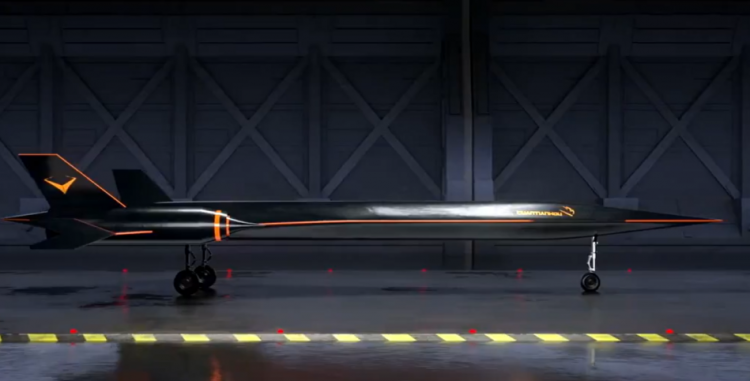China's Space Transportation, also known as Lingkong Tianxing Technology, is testing a supersonic jet that aims to revolutionize air travel, boasting speeds that could cut travel time from London to New York to under two hours. The jet, reaching a maximum speed of 3,106 mph-four times the speed of sound-has achieved a significant milestone in its development, according to Chinese state media.
The engine powering this groundbreaking aircraft, known as the Jindouyun or JinDou400, utilizes advanced detonation combustion technology. This innovation eliminates the need for compressors and turbine parts typically found in traditional rocket engines, relying instead on shock waves created by detonation ramjets to compress incoming air and generate thrust. This approach reduces the engine's weight and operational costs, making it a commercially viable option for high-speed air travel.
In its most recent tests, the prototype reached altitudes exceeding 65,600 feet, demonstrating its capability to operate in near-space environments. "This engine has significant commercial potential in the field of high-speed flight within near-space environments," Space Transportation stated to the South China Morning Post. The company also emphasized that the successful test provided critical data on key systems, including fuel supply, electrical components, and control mechanisms. These results validated the engine's stability and reliability, marking a major step toward transforming the prototype into a fully functional aircraft.
The Chinese firm envisions launching a passenger version of the jet, known as the Yunxing aircraft, by 2027. Designed for vertical take-off and landing, the aircraft could represent a significant leap forward in commercial aviation.
Meanwhile, in the United States, Boom Technology's XB-1, often referred to as the "Son of Concorde," is progressing with its own supersonic ambitions. The XB-1 recently completed its ninth test flight, achieving a new top altitude of 27,716 feet and a maximum speed of Mach 0.87, or 667 mph. The company aims to reduce London-to-New York travel time to 3.5 hours, compared to the current average of eight hours.
While both Space Transportation and Boom Technology are pushing the boundaries of air travel, the Chinese prototype's ability to more than double the speed of the defunct Concorde presents a potentially transformative advantage. The Concorde, retired in 2003, faced challenges due to high operational costs and the disruptive sonic boom it created, which led to its banning in several regions.





